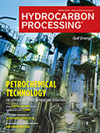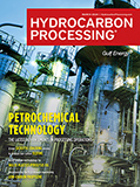Heat Transfer
Lummus Technology to provide proprietary heaters to Amiral petrochemical complex in Saudi Arabia
Lummus Technology announced a contract award from Hyundai Engineering & Construction Co. Ltd. to provide eight proprietary Short Residence Time (SRT®) ethylene cracking heaters at SATORP's Amiral petrochemical complex in Saudi Arabia.
Optimizing combustion processes for safety and efficiency
Combustion processes are critical for producing heat and power in nearly every industry.
Convection section cleaning approach achieves results at refineries worldwide
Inefficient heat transfer in the convection section of a process heater is readily evident by an increase in stack temperature beyond design parameters.
Innovations: New AI-powered carbon emissions management software
GE Vernova’s Digital business has released its CERius™, a carbon emissions management software designed to help energy companies progress toward their net-zero goals using data precision and abatement planning capabilities.
Digital Feature: Enhancing ethylene cracker radiant tube integrity through innovative robotic inspection
Radiant tube failure ranks as a primary cause of unplanned shutdowns in ethylene cracking furnaces. This article examines tube failures via carburization, along with a proprietary technology that provides comprehensive multi-aspect inspection data to mitigate ethylene radiant tube failures.
A CFD study on the effect of operating an SMR furnace without one of the flue gas tunnels A
A computational fluid dynamics study was performed on a theoretical reforming furnace to determine the comparative results of flow uniformity in flue gas tunnels with and without a standing tunnel in the outer position.
Lummus launches upgraded Helixchanger technology
Lummus Technology announced the launch of its latest heat exchanger technology, the Helixchanger 2.0 system.
Take the mystery out of running your LNG plant
Many natural gas liquefaction plants with production capacities ranging from 0.5 MMtpy to 8 MMtpy use mixed refrigerants to cool and liquefy the feed.
Differential thermal expansion and welding problems in dissimilar joint of carbon steel to austenitic stainless-steel piping in high-temperature applications
Joining dissimilar piping materials has found widespread application in various process plant piping, most notably in jacketed piping with carbon-steel jackets and austenitic stainless-steel core piping with stainless-steel end closures that require welding to carbon-steel jacket piping.
Energy comparison for heat pump and bottom flashing schemes for C3 hydrocarbon system
Propane-propylene splitters are present in significant numbers across petrochemical complex units, such as ethylene crackers and propane dehydrogenation units.

- Renewable fuels project in Canada begins production 4/19
- Jet fuel demand growth lags as air traffic exceeds pre-pandemic level 4/19
- Jet2.com to use SAF at London Stansted Airport 4/19
- Neste and New Jersey Natural Gas target reducing greenhouse gas emissions with Neste MY Renewable Diesel 4/19
- Cepsa and Evos join up for green methanol storage in Spain and the Netherlands 4/19
- Russia's Bashneft oil company installs anti-drone nets to protect refineries 4/19




